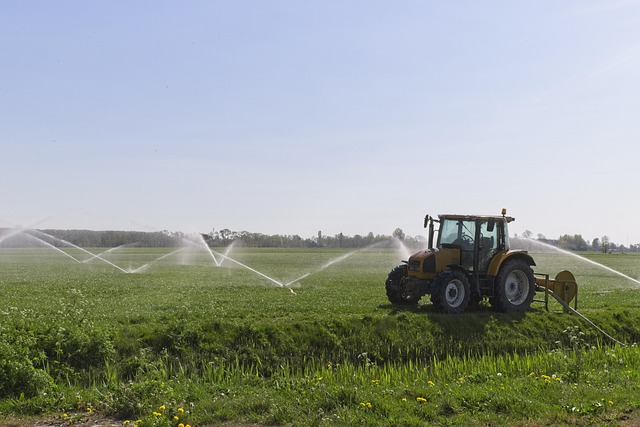Water Pumps: Uses in Irrigation, Agriculture, Industry, and Farming
A water pump moves water from one place to another using mechanical action and is a core asset for irrigation, agriculture, industry, and farming. Pumps range from small portable units to large industrial installations and are chosen for flow, pressure (head), power source, and application. Understanding types, common uses, and maintenance needs helps operators select the right unit and extend service life across different settings.

What is a water pump and how does it work?
A water pump is a mechanical device that transfers water by converting mechanical energy into fluid flow. The two broad categories are centrifugal pumps, which impart velocity to water via a rotating impeller, and positive-displacement pumps, which move a fixed volume per cycle. Selection depends on required flow rate (liters per minute or gallons per minute) and head (the height water must be lifted). Pumps may be driven by electric motors, diesel engines, or renewable sources like solar panels, each affecting installation and operating considerations.
Many pumps are designed for continuous service while others are intermittent; submersible pumps sit within the water source and are common for wells and boreholes, whereas surface pumps are installed above ground for irrigation or transfer tasks. Material choice (cast iron, stainless steel, plastics) matters when handling corrosive or abrasive water, and proper sealing and bearings are critical to prevent leakage and failure.
How are water pumps used in irrigation?
In irrigation systems, pumps supply the pressure and flow needed to distribute water through canals, sprinklers, or drip lines. For pressurized systems, pumps must deliver consistent flow at the required pressure to ensure even coverage and efficient water use. Drip irrigation typically requires lower pressure but precise flow, while pivot and sprinkler systems need higher pressure and steady output.
Designers match pump curves to system demand, often sizing pumps slightly above the expected peak to avoid cavitation and ensure longevity. Filtration and clog-resistant features are important where surface water or recycled sources are used. Energy efficiency matters in irrigation because pumping often represents a major portion of on-farm energy use, so variable frequency drives and staged pumping can reduce costs and improve performance.
How do water pumps support agriculture?
In agriculture, pumps serve multiple roles: delivering irrigation, supplying water for livestock, powering greenhouse climate systems, and moving nutrient solutions in controlled environments. Portable pumps enable water transfer between storage tanks or ponds, while fixed installations provide reliable water supply for orchards, row crops, and processing facilities.
Farm-scale choices balance reliability and maintenance ease with fuel or electricity availability. For livestock, redundancy and backup power are common priorities to ensure animal welfare. Pumps used for fertilized or chemically treated water require corrosion-resistant materials and scheduled maintenance to avoid clogging and chemical degradation of seals and hoses.
What types of pumps are used in industry?
Industry uses a wide variety of pumps for process water, cooling towers, wastewater handling, and chemical transfer. Centrifugal pumps dominate for general-purpose service because they handle large volumes efficiently and have relatively simple maintenance. Positive-displacement pumps—gear, diaphragm, peristaltic—are preferred where precise dosing or handling of viscous or abrasive fluids is needed.
Industrial installations emphasize durability, standardized spare parts, and monitoring systems for vibration, temperature, and flow. Integration with control systems allows automated operation, alarms, and range-based efficiency tuning. Materials and certification (e.g., for potable water or hazardous fluids) must match regulatory and safety requirements in each facility.
How do water pumps affect farming operations?
At the farm level, pumps influence both productivity and operational costs. Reliable pumps enable consistent irrigation scheduling, which can directly impact crop yields and quality. Properly sized and maintained pumps also reduce downtime during critical growth stages. Energy consumption for pumping is a recurring expense, so efficiency measures—such as regular system audits, pipe sizing optimization, and leak reduction—can yield tangible savings.
Maintenance practices include monitoring bearings and seals, replacing worn impellers, checking alignment, and protecting motors from overheating and moisture. Farmers increasingly adopt remote monitoring and simple telemetry to track run times and detect abnormal conditions early. Choosing the correct pump for soil type, water source (deep well, surface water, or recycled), and seasonal needs helps balance capital costs and long-term reliability.
Conclusion
Water pumps are versatile components that connect water sources to the needs of irrigation, agriculture, industry, and farming. Choosing the right pump involves assessing flow and head requirements, power availability, water quality, and maintenance capacity. Regular inspection and matching pump selection to application improve efficiency and service life, supporting consistent water delivery across diverse settings.






